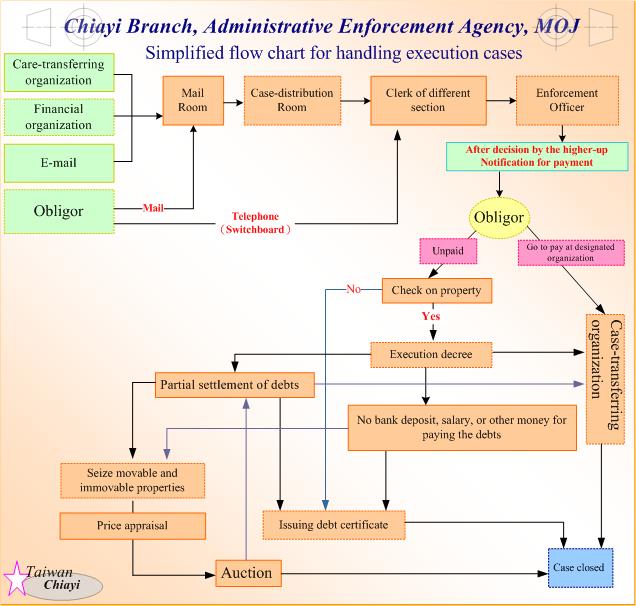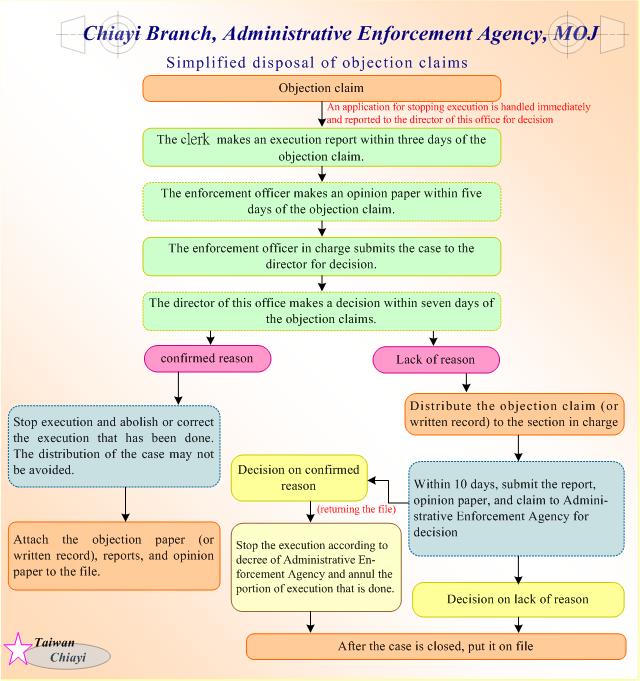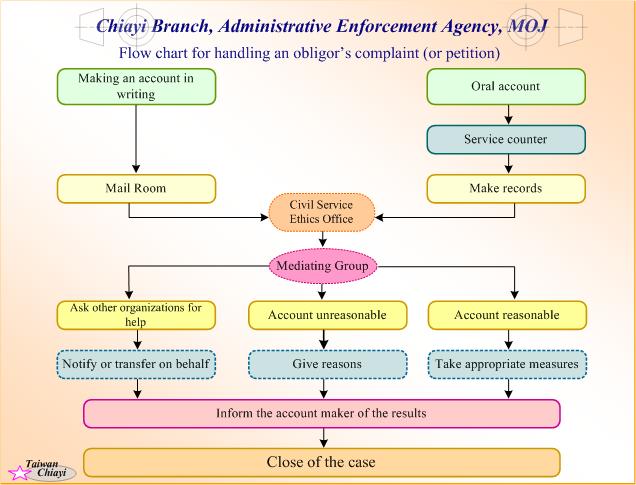Flow chart for handling execution cases
- Publication Date :
- Last updated:2019-09-10
- View count:7183
Table Ⅰ: Simplified flow chart for handling execution cases
1. Transfer the case to this office and distribute it to concerned section.
2. Examine the legal conditions for execution by concerned sections and notify the obligor to make the payment.
3. Check on the obligor's property for compulsory execution if he or she fails to make the payment within prescribed
time.

Table Ⅱ: Simplified disposal of objection claims
1. After an obligor's objection claim is received, it is sent to the section in charge.
2. The clerk officer makes a report on the execution for submission to the enforcement officer to make an opinion paper
for approval by the director of this office.
3. If the objection claim is reasonable, the execution is supposed to be stopped, and the executed portion should be
nullified or corrected as well. If the objection claim is unreasonable, distributing the objection claim to the section in
charge, and together with the report and opinion paper, being submitted to the Administrative Enforcement Agency for
decision.
4. If the Administrative Enforcement Agency decides that the objection claim is reasonable, this office stops the execution
in accordance with the decision and nullifies or corrects the executed portion of the case. If the Administrative
Enforcement Agency rejects the claim, the execution is continued.

Table Ⅲ: Flow chart for handling an obligor's complaint (or petition)
1. When an obligor comes to this office to make an oral account of his case, the volunteer worker at the reception desk
asks about his status and his case, record the information in the registry, and inform the civil service ethics office for
disposal.
2. If the obligor presents his case in writing, after the registration the by the official in charge, refers the case to the Civil
Service Ethics Office for further handling.
3. After being aware of the case preliminarily, the Civil Service Ethics Office then meet with mediating group according as
the sort of case or coordinate with relating divisions to deal with appropriately.
4. The obligor is informed about the decision on the case either orally or in writing.
5. All individual cases are recorded separatedly for submission and reference.

Table Ⅳ: Steps for Tax-payers & Other Payers concerned
Tax-payers/ other payers concerned to be guided by Information Employees to sections in charge
*Transferring offices with agents at this office: please proceed to agents, pay taxes/ other penalty, and obtain receipts.
*Transferring offices without agents at this office: (Tax-payer/other payers concerned)
.Pay at bank in cash or money order , and obtain receipts.
.Purchase money order and pay at sections in charge
.Pay at cashier’s and obtain receipts
Table Ⅳ:Operation Flowchart of Payment on Site by Obligor

